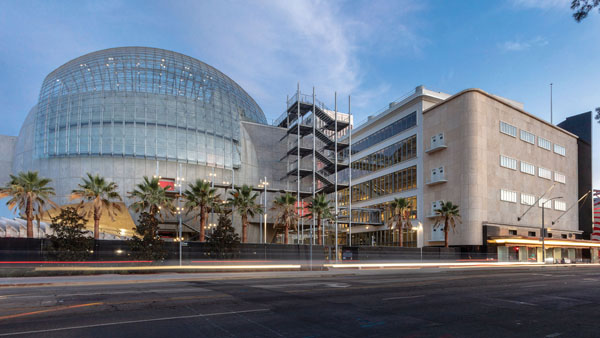
One thing I find particularly satisfying about the new Academy Museum of Motion Pictures which opened last week, was all the exhibition space given to animated film. Right alongside displays dedicated to The Wizard of Oz, Hitchcock, and Orson Welles, were exhibits about Disney Animation, Laika, and Bugs Bunny. The very first special exhibition is one honoring legendary Japanese animator Hayao Miyazaki.
It wasn’t always this way. When I first began in animation in the 1970s, I discovered there was a clear line drawn between animation and live action filmmaking. You either worked on cartoons, or REAL movies. Grown up film. Animation was referred to even by its practitioners as “The Bastard Child of the Film Business.” Considered then an outmoded relic of the old studio system, only good now to sell cereal to kids on Saturday morning. Chuck Jones and John and Faith Hubley had always hoped animation would be recognized as a real artform.
Before Jeffrey Katzenberg made it cool to be an animation producer, being assigned to animation was a studio executives’ nightmare. At the end of a project, you could see how happy execs would be to escape to the main lot to do something more important. Walt Disney Studios was the exception, because The Mouse Factory had always been an animation studio first, and promoted their production people from within. But that was unique. All the other big movie studios considered animation as a dead end, and moved their animation units to the furthest corners of their studio lot. When the great industry slowdown came in the late 1950s, animation units became the first things studios would shed. Classic shorts were sold off in bundles like yesterday’s newspaper, and truckloads of classic animation art was buried in landfills.
Young people today ask why famous movie stars of the past never did voices in animated films? It was because being offered such work would have been viewed by them as insulting, and way beneath their pay grade. When Jodie Benson got the role of Ariel in The Little Mermaid, her other Broadway actor friends called her with expressions of sympathy. They took it as a sign her career was in decline.
Originally, motion picture visual effects were a few guys with grey ponytails blowing up toy planes and miniatures. Then when VFX went digital, it became mostly animation done on computers. Character animators were brought in to breathe life into uninteresting motion capture. The reason movie visual effects people never unionized with the animators, was because for many years they did not want to be associated with the people who made cartoons. That it would somehow diminish their reputations. They were involved in serious filmmaking. When In 2009 James Cameron’s smash Avatar came out, it was suggested that the film might qualify for a Best Animated Film Oscar. Since it fulfilled the Academy’s rule that 70% of the principal characters be done in frame-by-frame technique. Cameron quickly dismissed the idea, “The thing that people need to keep very strongly in mind is that this is not an animated film……I don’t do animation. That’s Pixar’s job!” (“James Cameron: It’s Not Animation Because I say So.” Cartoon Brew Jan. 15, 2010)
For years Academy administrators considered dropping the animated short Oscar category altogether, or at least cut it from the Oscar night broadcast. The days of Bambi and The Jungle Book were never coming back.
Things began to change with the big 2D Renaissance and Digital Revolution of the 1990s. Movies like The Little Mermaid and Lion King dominated the global box office, Robin Williams Genie opened the door for more celebrities to do voicework, Beauty and the Beast earned a nomination for Best Picture, animator Seth McFarlane actually hosting the Academy Awards in 2013. In most lists of highest grossing films, half were animated. Today, in the big action fantasy blockbusters like the Marvel Universe, much of the movie requires animation and/or digital imaging. The Best Animated Feature Oscar, only instituted in 2001, has proven to be one of the more popular categories with the public. In games, effects and broadcast, animation has become central to how we experience modern media today.
A decade ago, I was invited to an early planning meeting for the Museum. When I came into the meeting slightly late, several very important film people were in the process of drawing up a list of classic movies that could be honored with exhibits. As my eyes scanned down the list, spanning the 100-year history of filmmaking, I saw they did not include a single animated film. When finally they asked for my input, I blurted out, “Uh…SNOW WHITE? FANTASIA? YELLOW SUBMARINE? GERTIE THE DINOSAUR? THE THREE LITTLE PIGS? JUNGLE BOOK? MOONBIRD?” I made my point, and they were added, although I think there are a producer or two who are still annoyed with me for my insolent outburst.
Since that early meeting, the museum project went through several changes of management and revamped strategies. I am happy to say the current team assembled under museum director Bill Kramer really gets animation and its place in Hollywood filmmaking. Instead of being shunted off to a neglected corner of the museum, animation has several important exhibit spaces, and more screenings and special shows are in the works for the future.
At long last, the bastard stepchild is welcome at the table. The dream of Walt Disney, Chuck Jones, and John & Faith Hubley has now been realized. Not only does Hollywood filmmaking have its own museum, Animation has its own museum. To the people who love animation, who create animation, this museum is your home as much as it is for a Spielberg or Saban. Great exhibits like Frank Thomas’ desk, Bob Clampett’s original maquette of Bugs Bunny, The Pixar Zoetrope, Kubo from Kubo and the Two Strings. Now is the time to come and celebrate the artform we love. Cherish and support your museum, and bring friends and family to it when they visit from out of town. And who knows? Someday something you create might be exhibited there. See you at the Museum.

The author at the Miyazaki exhibit at the opening of the Academy Museum of Motion Pictures last week
Below: A few snaps of some of the animation art and artifacts on display at the new Academy Museum.

Frank Thomas’ animation desk
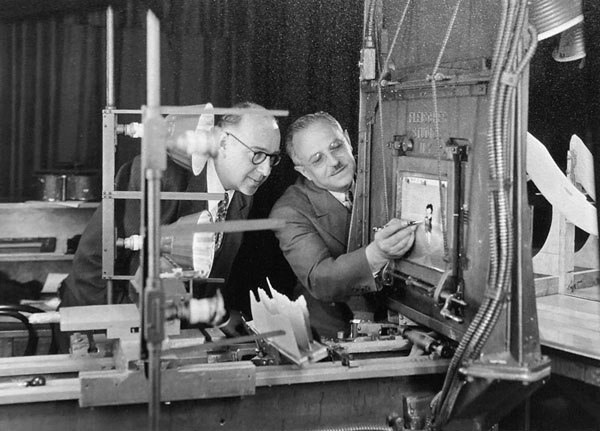
Rare photographs of veteran animators – Here Max Fleischer demonstrates his Stereo-Optical animation camera stand.
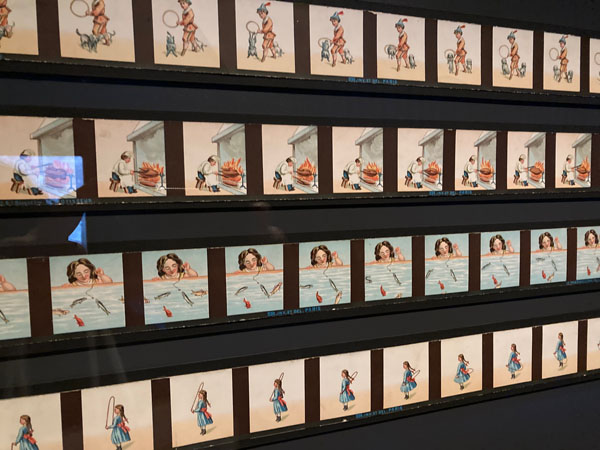
Rare Magic Lanterns, Zoetropes, Slides and animation – pre-Film!
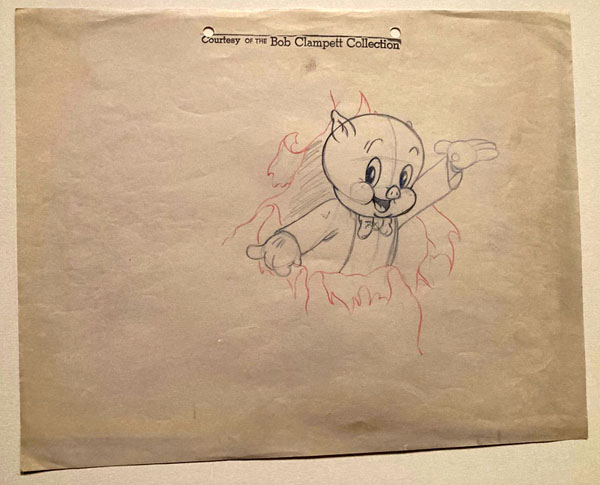
That’s NOT all folks!
The Museum is now open. For information on how to visit: click here.


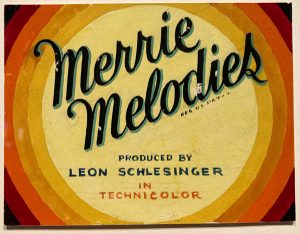
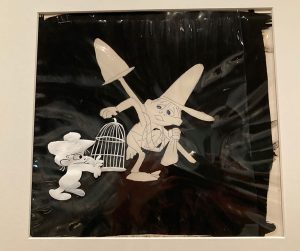
 Tom Sito is an animator, former Academy Governor, and historian. He currently teaches at the University of Southern California.
Tom Sito is an animator, former Academy Governor, and historian. He currently teaches at the University of Southern California.

























This is fantastic news, and my extended hope for something like this is that similar permanent exhibits open here on the East Coast as well.
In such a case, there could be the usual history of the Hollywood cartoon studio, but there would be more attention given to East Coast animation studios like the Max Fleischer Studios or art from the Paul Terry Studios, along with screenings of possibly restored cartoons from those studios.
I do really enjoy the Hollywood cartoons as well, so screenings of restored cartoons in that area would be totally enjoyed, and such a museum set up in New York would also allow for the absolute perfect place for seeing one’s favorite classic and modern cartoons as they should be seen. If there are cinemascope cartoons, you should be able to see them that way. Such theatrical events could spring such interest to life amid the major Hollywood companies to restore more of their cartoons, and the museum would, thus, have actual product that new fans could buy and enjoy at home after learning so much about the rich history of the art form.
Good luck and all the best to this ongoing project, and here’s hoping that it reaches all corners of the United States.
Thats why you need to keep bugging the Museum of the Moving Image. When I lived in NYC, they had great screenings of animation at MOMA.
I believe the revolution started in 1988, with the release of Roger Rabbit. Animation was mostly moribund until then.
I agree. You could also make an argument for Don Bluth’s American Tale (1986), a big smash done outside of Disney.
Alongside the movies, “The Simpsons” also played a role in the rebirth of animation. The most successful primetime animated series ever–and the longest running American primetime series ever–it began in 1987 as a series of shorts on “The Tracy Ullman Show” before getting its own series. Like the films of the Disney renaissance, it featured big-name guest stars and ended the notion that TV cartoons were just kids’ stuff. It was as important to TV animation as the Disney Renaissance was to film.
Well, it’s about time!
Wasn’t there a cartoon museum with contributions from Chuck Jones and Bob Clampett – for instance – that eventually was disbanded? I HOPE this one will succeed!
However, so-called “Computer Animation” or “Digital Animation” is mostly NOT made frame-by-frame! Therefore, it is it’s own technique, not Motion Picture Screen Cartooning, and should compete within it’s own ranks. The Academy defines animated film as FRAME BY FRAME technique, yet lumps stuff made with digital technique in with real animation/cartooning. I am very unhappy with this category creep, and think the Academy should enforce their own rules when it comes to judging animated cartoons.
It’s still a form of animation. I mean it’s not ignored in animation history books. Tom even wrote a great book on the history of computer animation.
The Animation displays were definitely the best of the exhibits. On the whole I was underwhelmed by the rest of the museum with the possible exception of the Wizard of Oz display. Would love to see Disney’s multiplane camera moved to the museum for all to see. The place needs more tactile stuff, not just videos.
I agree. Its a start. A good museum is an organic thing. It keeps growing and changing. Lately the trend is towards museums with a lot of zen empty space for contemplation. I prefer more clutter. When I go to Paris, I wanna see Marie Antoinette’s underwear. Not some slides.
I used to shop there when it was May Co. Haven’t been to the museum yet, but I hope there’s something about the movies that used the department store as a location. Across the street used to be Ohrbach’s, where clothes were bought for low-budget movies and the first season of “I Love Lucy.” It went out of business in 1987 and became an automotive museum.
The studios were notoriously disrespectful of their own cartoons and their creators. Jack Warner once famously said, “All I know is we made Mickey Mouse.” And I’m sure you remember Louis B. Mayer’s remark about “Snow White”: “Who’s going to pay to see a drawing of a fairy tale princess when for the same money they can look at Joan Crawford’s boobs?”
Louis B. Mayer also said, ” There are only two true geniuses in Hollywood today. Garbo and that goddamn Mouse!”
There was an exhibit such as this at the Chicago University in the Winter of 1980 that I put my finger on it as to what I wanted to do. It hit me like a bolt of lighting. “I wanna make them move!” I said as I stared at a Bugs Bunny cel setup. I sought out to do it, and never looked back. “To do IT” no matter what “it” is, is to achieve the dream you seek.
That recent Tim Burton show would be a good fit, since he straddles both worlds. But think what you could do with special shows dedicated to the professional and personal work of Chuck Jones, Ward Kimball, Terry Gilliam, Glen Keane… and that’s barely scratching the surface!
I feel hand drawn animation should have its own recognition. That’s the gift that has been giving since the beginning; the grass roots of all animation filmmaking.
I noticed something in the photograph of Max Fleischer “demonstration” the Stereoptical Camera. If you look closely, you see that a flat background painting is behind the cel of Betty Boop. Notice the white margin at the top. While the setback device appears behind, whatever was on the mini stage does not show through as behind the cel held by the platen. The perspective does not line up. This was one of the upright vertical camera stands mounted on a lathe bed. However, the camera has been removed from the beam, most likely for the convenience of taking the photo.
Good analysis! and the platen with chains to raise and lower it!!